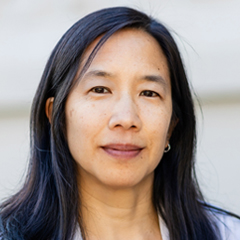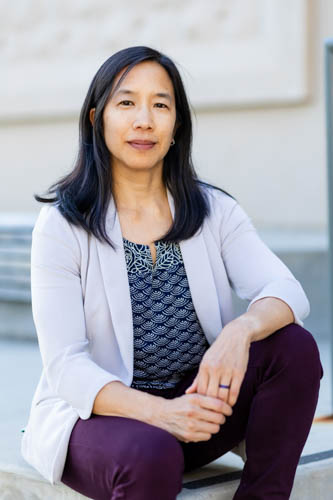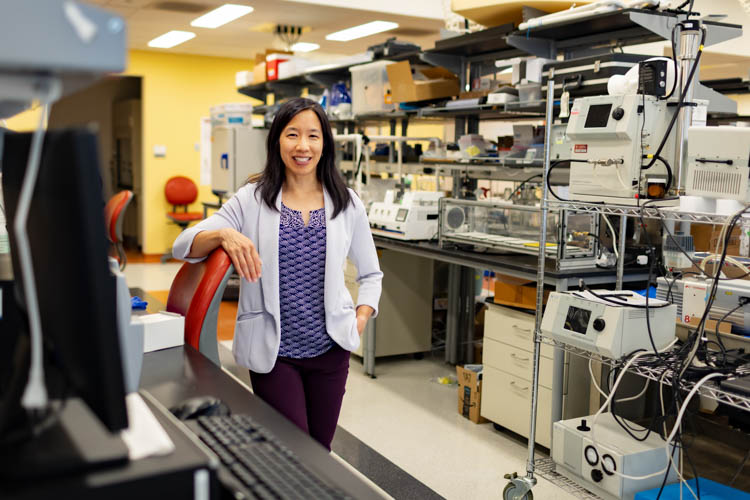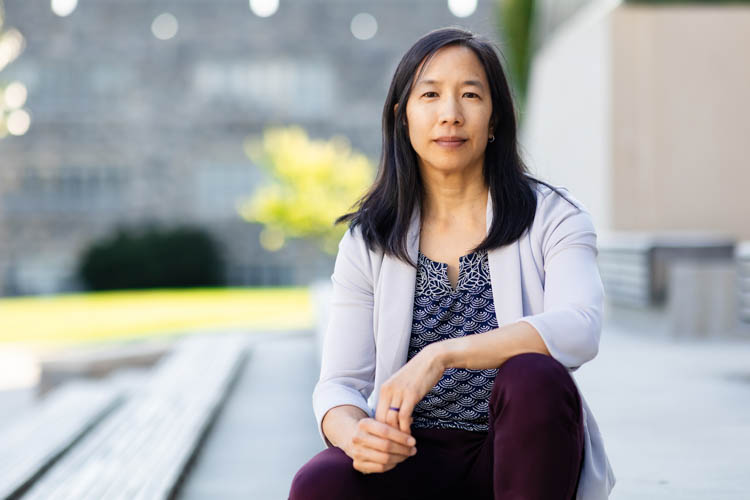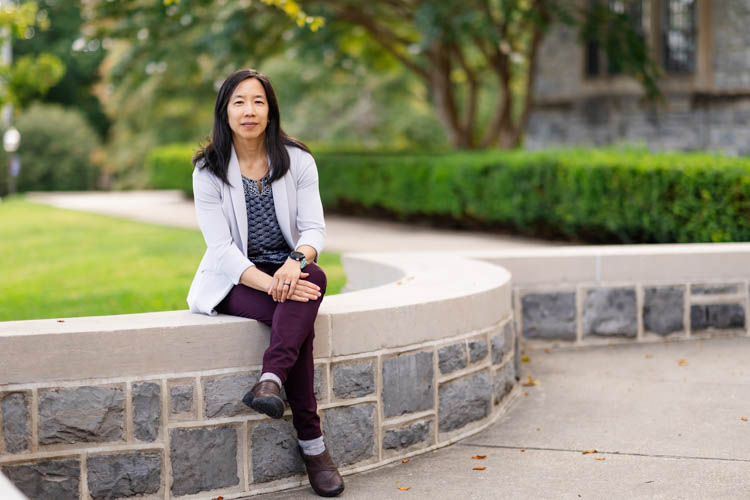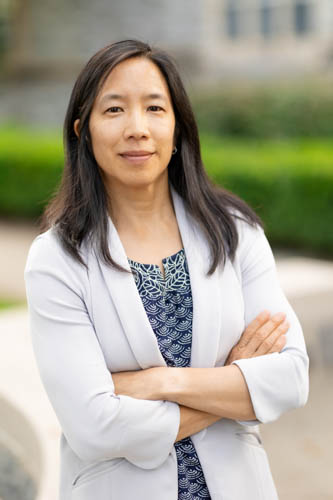About Linsey’s Work
Linsey Marr is an environmental engineer examining indoor and outdoor air quality and airborne pathogens that affect human health. Working at the intersection of atmospheric science, public health, and infectious disease, she clarifies the transmission of airborne diseases such as influenza and COVID-19 and identifies effective public health interventions. One focus of Marr's research is infectious bioaerosols—that is, airborne particles containing viruses or bacteria. She integrates insights and methods from research on traditional particulate pollutants with chemical and biological studies of pathogens. In this way, Marr has gained new insights into how time, atmospheric conditions, and particle size affect virus viability in aerosols.
Marr determined how different humidity levels impact influenza virus stability and infectiousness. She and her colleagues designed experiments using H1N1 flu virus aerosols that contained extracellular material from human bronchial cell cultures, thereby mimicking human respiratory droplets. Their experiments revealed that relative humidity (RH) impacts virus stability because of how it changes the physico-chemical composition of respiratory droplets. As respiratory droplets evaporate when they are released into the air, the change in acidity and salinity affects the infectivity of the virus. In further investigations, Marr established that at a low enough RH, the risk of airborne transmission actually increases because crystallization of salts in respiratory droplets protects the virus from further decay. Her research team also undertook studies to understand flu and COVID-19 transmission routes in daycares and gyms and to identify effective interventions. Marr’s work on bioaerosols has taken on increased importance since the emergence of the COVID-19 pandemic. Early in the pandemic, public health responses reinforced the long-standing belief that respiratory infections are transmitted primarily through contact with droplets sprayed (e.g., from a cough or sneeze) by an infected person. Marr was among the first to argue that airborne transmission via aerosols is a major mode of transmission for COVID-19. She and collaborators explained that infectious virus is carried in small aerosols that can infect others both at close range and at long distances in indoor air. Marr provided important evidence that prompted the eventual paradigm shift in global understanding of COVID-19 transmission. Her research also informed public health guidance aimed at mitigating airborne transmission, such as masking and improved ventilation and filtration in indoor spaces.
Human-wildlife interactions, climate change, and migration pressures are likely to accelerate the emergence of new infectious pathogens. Through her research and ability to communicate effectively with policy makers, Marr is a leader in efforts to improve air quality in settings around the world.
Biography
Linsey Marr received a BS (1996) from Harvard University and a PhD (2002) from the University of California at Berkeley. After conducting postdoctoral research at the Massachusetts Institute of Technology (2002–2003), she joined the faculty of Virginia Tech University and is currently a University Distinguished Professor and the Charles P. Lunsford Professor in the Department of Civil and Environmental Engineering. Marr’s work has been published in leading journals including Science, Proceedings of the National Academy of Sciences, Clinical Infectious Diseases, and Environmental Science and Technology, among others.
Published on October 4, 2023







